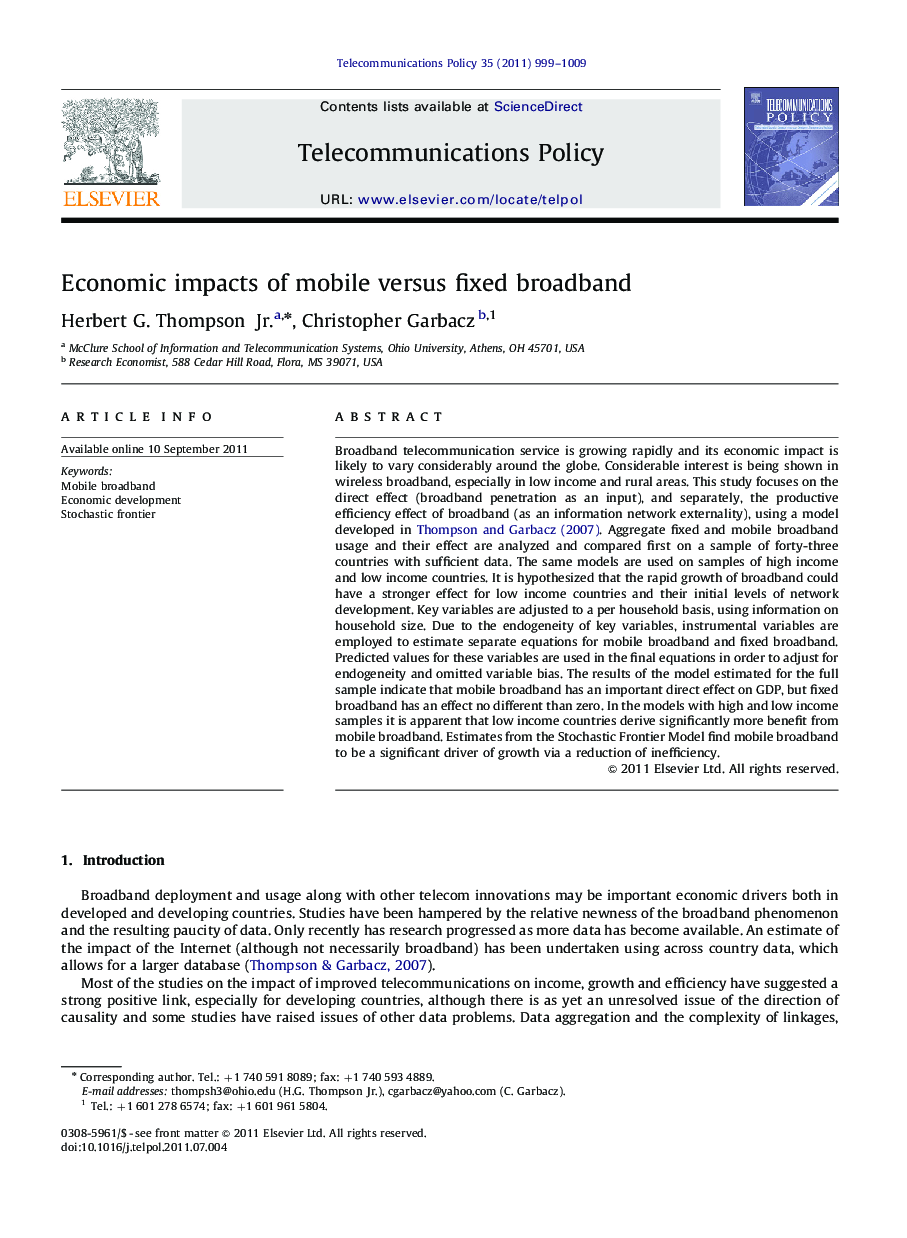| Article ID | Journal | Published Year | Pages | File Type |
|---|---|---|---|---|
| 556885 | Telecommunications Policy | 2011 | 11 Pages |
Broadband telecommunication service is growing rapidly and its economic impact is likely to vary considerably around the globe. Considerable interest is being shown in wireless broadband, especially in low income and rural areas. This study focuses on the direct effect (broadband penetration as an input), and separately, the productive efficiency effect of broadband (as an information network externality), using a model developed in Thompson and Garbacz (2007). Aggregate fixed and mobile broadband usage and their effect are analyzed and compared first on a sample of forty-three countries with sufficient data. The same models are used on samples of high income and low income countries. It is hypothesized that the rapid growth of broadband could have a stronger effect for low income countries and their initial levels of network development. Key variables are adjusted to a per household basis, using information on household size. Due to the endogeneity of key variables, instrumental variables are employed to estimate separate equations for mobile broadband and fixed broadband. Predicted values for these variables are used in the final equations in order to adjust for endogeneity and omitted variable bias. The results of the model estimated for the full sample indicate that mobile broadband has an important direct effect on GDP, but fixed broadband has an effect no different than zero. In the models with high and low income samples it is apparent that low income countries derive significantly more benefit from mobile broadband. Estimates from the Stochastic Frontier Model find mobile broadband to be a significant driver of growth via a reduction of inefficiency.
► Direct and indirect models measure fixed and mobile broadband impacts on efficiency and productivity. ► Mobile has a strong positive impact in lower income countries. ► Fixed broadband has a small or negative impact.
